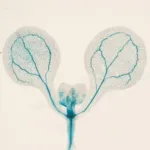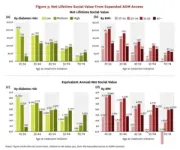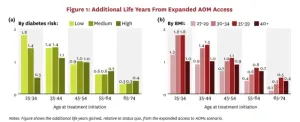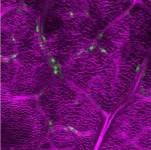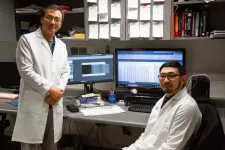(Press-News.org)
Ikoma, Japan—In an era where climate change threatens food security, scientists worldwide are searching for reliable ways to improve crop production. Extreme weather and shifting seasonal patterns can disrupt traditional agricultural cycles, making technologies that regulate the timing of plant growth invaluable for farmers worldwide.
Plant growth and development are dependent on many factors such as the environment, photoperiod, and genetics. Flowering is an important event in a plant’s life cycle, and in many species, a period of cold exposure (or vernalization) is required before flowering in the spring. Once flowering begins, plants redirect nutrients from their leaves to seed production, reducing the nutritional value of leafy crops. While scientists understand many aspects of this process, mechanisms that can naturally pause or reverse this phase of preparation for flowering (devernalization) remain largely unexplored.
Against this backdrop, a research team led by Assistant Professor Makoto Shirakawa of Nara Institute of Science and Technology (NAIST), Japan, has been investigating the molecular basis of devernalization. They identified a new class of small molecules called devernalizers (DVRs), capable of inducing devernalization without the requirement of heat treatment in the model organism Arabidopsis thaliana. Their findings were published in Volume 8 of Communications Biology on January 22, 2025. This work was co-authored by Nana Otsuka, Ryoya Yamaguchi, Hikaru Sawa, Nobutoshi Yamaguchi, and Toshiro Ito from NAIST; Naoya Kadofusa, Nanako Kato, and Ayato Sato from Nagoya University; and Yasuyuki Nomura and Atsushi J. Nagano from Ryukoku University.
The researchers screened over 16,000 chemical compounds and discovered five DVRs that reactivated the expression of the FLOWERING LOCUS C gene, a key suppressor of flowering. By minimizing specific dynamic modifications to the plant’s genes, these DVRs could delay flowering even after induced vernalization. Notably, three of these DVRs shared two critical structural features—a hydantoin-like region and a spiro-like carbon—which were found to be essential for the devernalizing effect.
Furthermore, the team identified a sixth DVR compound—named DVR06—which was structurally simpler yet retained the above-mentioned key features. Experimental results showed that plants treated with DVR06 exhibited delayed flowering without adverse side effects. A genome-wide analysis revealed that DVR06 affected a more specific set of genes compared to heat-induced devernalization, highlighting its potential for flowering regulation. “It was well known that applying heat treatment to plants in the field is both labor-intensive and costly. So, I was really excited when we found out that DVR06 had a more specific effect than heat treatment. This was the moment when all the time we had spent on screening finally paid off!” shares Shirakawa.
The discovery of DVR06 and its mechanisms could pave the way for new agricultural technologies that allow farmers to effectively regulate flowering times. By delaying flowering, leafy crops may maintain their nutritional quality for longer periods, increasing yields and reducing wastage. The research team aims to improve the efficacy of DVRs, as Ito remarks: “We will conduct further research to change the structure of DVRs to develop compounds with greater activity and specificity. We expect the results of these studies to lead to the development of new technologies for stable food production under a fluctuating global environment.”
###
Resource
Title: Small molecules and heat treatments reverse vernalization via epigenetic modification in Arabidopsis
Authors: Nana Otsuka, Ryoya Yamaguchi, Hikaru Sawa, Naoya Kadofusa, Nanako Kato, Yasuyuki Nomura, Nobutoshi Yamaguchi, Atsushi J. Nagano, Ayato Sato, Makoto Shirakawa, and Toshiro Ito
Journal : Communications Biology
DOI: 10.1038/s42003-025-07553-7
Information about the Plant Stem Cell Regulation and Floral Patterning Laboratory can be found at the following website: https://bsw3.naist.jp/ito/
About Nara Institute of Science and Technology (NAIST)
Established in 1991, Nara Institute of Science and Technology (NAIST) is a national university located in Kansai Science City, Japan. In 2018, NAIST underwent an organizational transformation to promote and continue interdisciplinary research in the fields of biological sciences, materials science, and information science. Known as one of the most prestigious research institutions in Japan, NAIST lays a strong emphasis on integrated research and collaborative co-creation with diverse stakeholders. NAIST envisions conducting cutting-edge research in frontier areas and training students to become tomorrow's leaders in science and technology.
END
A new USC Schaeffer Center white paper finds expanded access to anti-obesity medications would lead to significant increases in life expectancy and disease-free years while generating a substantial societal return on investment, even after accounting for treatment costs.
More than 4 in 10 U.S. adults have obesity, which is linked to increased risk of over 200 diseases — including heart disease, diabetes, cancer and dementia — and costs society $260 billion annually to treat. Highly effective new anti-obesity medications can be a powerful tool against chronic disease, but fewer than one-third of health insurers cover them amid concerns about upfront ...
Ikoma, Japan—Throughout evolution, plants have continuously adapted to survive in changing environments. Apart from complex structural changes, plants have also developed various defense strategies against herbivores, including tougher protective layers, thorns, and chemical deterrents. Delving deeper into the evolution of defense mechanisms, a research team led by Assistant Professor Makoto Shirakawa from Nara Institute of Science and Technology (NAIST), identified a surprising genetic adaptation in the Brassicales plant order. In these cruciferous ...
New York, NY — The American Federation for Aging Research (AFAR), is pleased to announce the 2025 recipients of three of its annual Scientific Awards of Distinction: David B. Allison, PhD, will receive the Irving S. Wright Award of Distinction; Daniel W. Belsky, PhD, will receive the Vincent Cristofalo Rising Star Award in Aging Research; and Arlan Richardson, PhD, will receive the George M. Martin Lifetime Achievement in Mentoring Award.
The Irving S. Wright Award of Distinction is named in honor of AFAR’s founder and recognizes exceptional contributions to basic ...
RIVERSIDE, Calif. -- Vaping during pregnancy is becoming more common, but its impact on early human development is not well understood. A new study by scientists at the University of California, Riverside, now reports that the flavor chemical menthol used in electronic cigarettes could pose risks to a developing baby.
The study, published in STEM CELLS Translational Medicine, used human embryonic stem cells, or hESCs, to characterize early stages of embryonic development and examined how low concentrations of menthol affect important cellular processes.
The ...
Clothes that can mimic the feeling of being touched, touch displays that provide haptic feedback to users, or even ultralight loudspeakers. These are just some of the devices made possible using thin silicone films that can be precisely controlled so that they vibrate, flex, press or pull exactly as desired. And all done simply by applying an electrical voltage. The research teams at the Center for Mechatronics and Automation Technology in Saarbrücken (ZeMA) headed by Professors Stefan Seelecke and Paul Motzki (Saarland University) and John Heppe (htw saar – University of Applied Sciences ...
FAMU-FSU College of Engineering researchers have created a new method for studying protein degradation within immune cells that uses engineered microparticles to track and analyze degradation processes more effectively than traditional methods.
The work, which was published in ACS Applied Materials & Interfaces, has important implications for treating diseases such as cancer, Alzheimer’s disease and autoimmune disorders.
“There is a lot we still don’t know about how cells ingest and eliminate tissue debris or pathogens — the process ...
How gravity causes a perfectly spherical ball to roll down an inclined plane is part of elementary school physics canon. But the world is messier than a textbook.
Scientists in the Harvard John A. Paulson School of Engineering and Applied Sciences (SEAS) have sought to quantitatively describe the much more complex rolling physics of real-world objects. Led by L. Mahadevan, the Lola England de Valpine Professor of Applied Mathematics, Physics, and Organismic and Evolutionary Biology in SEAS and FAS, they combined theory, simulations, and experiments to understand what happens when an imperfect, ...
A team of researchers from Arizona State University, the U.S. Army Research Laboratory (ARL), Lehigh University and Louisiana State University has developed a groundbreaking high-temperature copper alloy with exceptional thermal stability and mechanical strength.
The research team’s findings on the new copper alloy, published in prestigious journal Science, introduce a novel bulk Cu-3Ta-0.5Li nanocrystalline alloy that exhibits remarkable resistance to coarsening and creep deformation, even at temperatures near its melting point.
“Our alloy design approach mimics the strengthening mechanisms found in Ni-based superalloys,” said Kiran Solanki, a professor at ...
The way teachers manage classroom discussion with pupils plays a key role in the teaching of writing, a new study shows.
The research shows the importance of managing classroom discussion in a way that develops pupils’ understanding of the choices that writers make, and how those choices create particular effects for readers. This discussion helps pupils to think more about the choices that they make in their own writing.
The study reinforces the importance of dedicating time to discussion in secondary English lessons. It shows that time should be given to exploratory, speculative discussion that ...
Research from Stanley Manne Children’s Research Institute at Ann & Robert H. Lurie Children’s Hospital of Chicago strongly suggests that Kawasaki disease is caused by a single respiratory virus that is yet to be identified. Findings contradict the theory that many different pathogens or toxins could cause this disease that can lead to serious cardiac complications in young children.
“The cause of Kawasaki disease has been a mystery for over 50 years,” said Anne Rowley, MD, pediatric infectious diseases expert and scientist at Manne Research Institute at Lurie Children’s, who is the lead author on the study published ...
